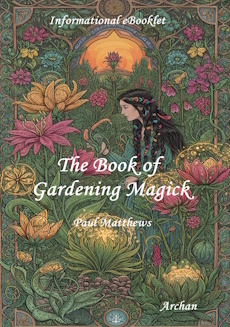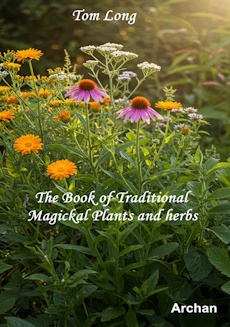 |
|---|
![]()
Flowers, herbs and plants - Occult & magickal properties Herbs and flowers have long been integral to the practices and philosophies of occultism, serving both symbolic and practical functions within various esoteric traditions. The use of botanical elements in occult rituals can be traced back through history to ancient cultures that revered plants for their medicinal, magical, and spiritual properties. The belief that certain herbs possess inherent energies or frequencies is rooted in an understanding of natural symbolism: for instance, rosemary is associated with memory and protection, while mugwort is traditionally linked to dreams and divination. This relationship with the plant kingdom underscores a deeper, more universal interconnectedness, which many occult practitioners emphasize as a significant tenet of their belief systems. The extraction and use of these plants in rituals often represent a fusion of nature and spirituality, creating a tactile bridge between the material and the metaphysical. Practitioners use herbs not only in the crafting of potions or tinctures but also in the preparation of talismans and charms, where they are believed to magnify intention and amplify energetic vibrations. Flowers, with their ephemeral beauty and myriad forms, are often employed in ceremonial contexts to invoke specific deities or energies. For example, the pentacle, often associated with protection, is typically adorned with herbs such as basil or yarrow that are thought to enhance spiritual fortitude. In this way, botanicals serve as conduits for intent, allowing practitioners to tap into both the physical attributes of the plants and their esoteric significances. Furthermore, the rise of contemporary witchcraft and neo-pagan movements in the late 20th century has reinvigorated interest in traditional herbalism, amplifying the discourse surrounding the role of these natural elements in occult practices. Modern practitioners often emphasize sustainable gathering and deep-rooted knowledge of herbal lore as foundations of their work, integrating scientific understanding with spiritual intuition. While the mystique surrounding herbs and flowers remains prevalent, there is a growing movement towards academic inquiry into the ethnobotanical aspects of occultism. Scholars increasingly aim to contextualize these practices within inter-cultural dialogue, exploring how different traditions utilize botanical elements to negotiate personal and collective identities in diverse sociocultural landscapes. Thus, herbs and flowers in occultism represent not only tools of magic but also essential symbols of cultural heritage and spiritual exploration.
|
|---|

